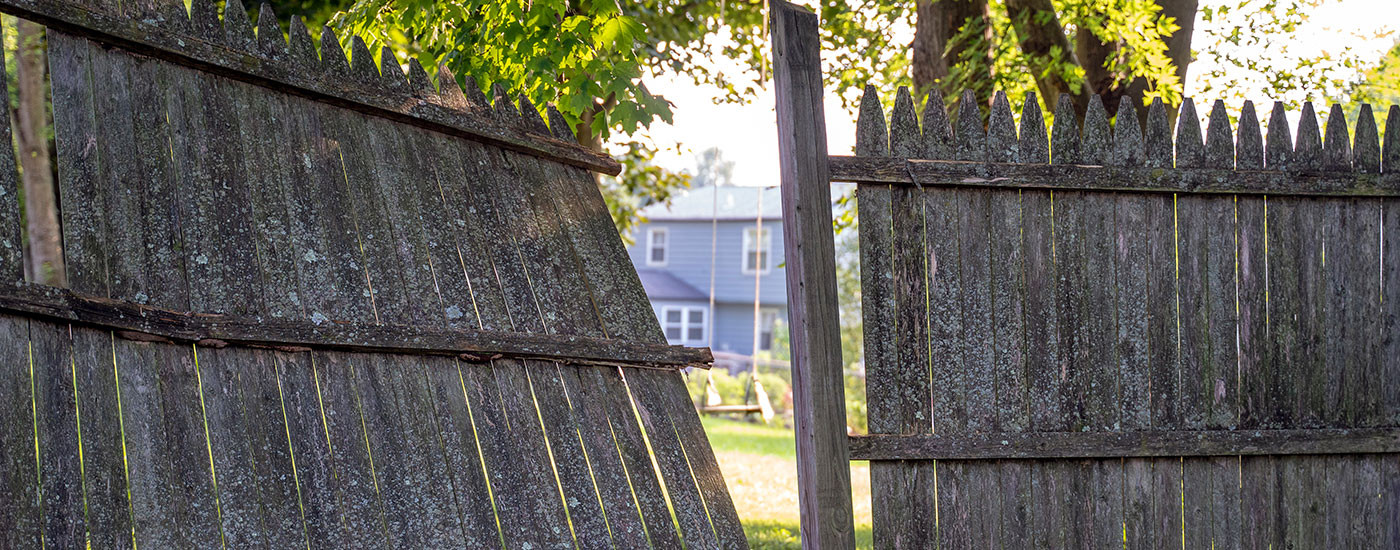From leaf fall being scattered everywhere and plants being battered, to fences being damaged, high winds can wreak havoc in gardens.
Why fences fall down in strong winds
Usually, fences will succumb to high winds for two reason. General wear and tear will weaken a fence, particularly an older fence, because posts may have become weakened or compromised over time, through rotting at the base. Incorrect installation will also affect a fence’s ability to withstand winds, for example if the fence posts were not originally set deep enough into the ground, or not set in a concrete mix.
Assess the damage
Before tackling the fence repairs, it is vital to take stock of the situation. Check your house insurance policy – sometimes where a fallen fence panel poses a security risk to the property, you may be covered by insurance and if this is the case, your insurers will want to organise the work. If it is a fence post that has been damaged, your insurance is unlikely to cover it; if there is no security risk, wait until the weather conditions have improved, whenever possible, and always make sure you have the necessary tools and equipment, before starting any repairs.
Be safety aware – prevent further damage
If a fence panel has fallen, remove it to a place of safety, to avoid obstructions and hazards to others. Avoid leaning the panel up against a different section of the fence as that could weaken another panel. If the panel is not damaged, remove anything that can cause harm such as loose nails. Next, check over the rest of the fence. If you suspect that other panels are loose and at risk, remove them. Move any outdoor furniture or planters to avoid accidental damage and, if you have pets, attach a temporary metal wire fence across any openings they could escape through.
Fence posts – replace or repair?
It is always preferable to replace a fallen fence post because even if the post appears fine, it may have been damaged below ground level. Pressure treated softwood fence posts are recommended as the preservation process applied to them will protect them against future adverse weather conditions. Our step-by-step guide to erecting a fence has lots of tips for installing new fence posts. Where it isn’t possible to replace a fence post, there are measures you can take to repair it. Attaching a repair spur to the damaged post will strengthen it; the repair spur should be concreted into the ground. Whenever securing posts or spurs into the ground, using postcrete is recommended for strength and durability. If you have not used postcrete before, our blog explains the difference between it and concrete, and has instructions how to use it.
Replacing fence panels
Replacing an individual fence panel is straightforward and can be achieved quickly and easily, but remember a panel that is 6ft wide will need two people to manhandle it. Simply attach the new panel to timber fence posts or slot into concrete posts. Where several panels have failed, it is better to replace the entire fence, following our step-by-step guide.
Treating the repaired fence
Once the repairs or replacement have been carried out, treating new posts and panels will increase moisture resistance and slow the rotting process down considerably. Our shed and fence wood treatments offer great coverage and will colour and weather-proof in one coat.
We stock an extensive range of timber fencing; with everything you need to repair or replace an individual fence post or an entire fence. If you are unsure what you need, our expert staff is always on hand to help via email or telephone on 01205 359188.

